The imperial and historic cities of Morocco: Fez, Marrakech, Meknes and Rabat
The cities of Fez, Marrakech, Meknes and Rabat, known as the imperial and historic cities of Morocco, are collectively recognised for their prestige and special significance. Each of these cities encompasses the heritage of one or more dynasties in Moroccan history. With the advent of a dynasty, each ruler chose a new seat of power, a city to establish their patronage of the arts, the construction of eponymous architecture, to enhance education and honour Islam. These political stratagems to validate their claims to power have left behind indelible imprints of their dynasties, their civilisations as well as their lifestyles. Morocco is the guardian of a rich heritage thanks to its position at the crossroads of Europe, Africa and the Middle East. Fez is the capital of the intellectual, spiritual and scientific spirit; Marrakech is the luxury jewel on the edge of the Sahara desert; Meknes is the underestimated city which preserves the wealthy royalty of the Ismaili dynasties and Rabat is the imperial capital of our time.
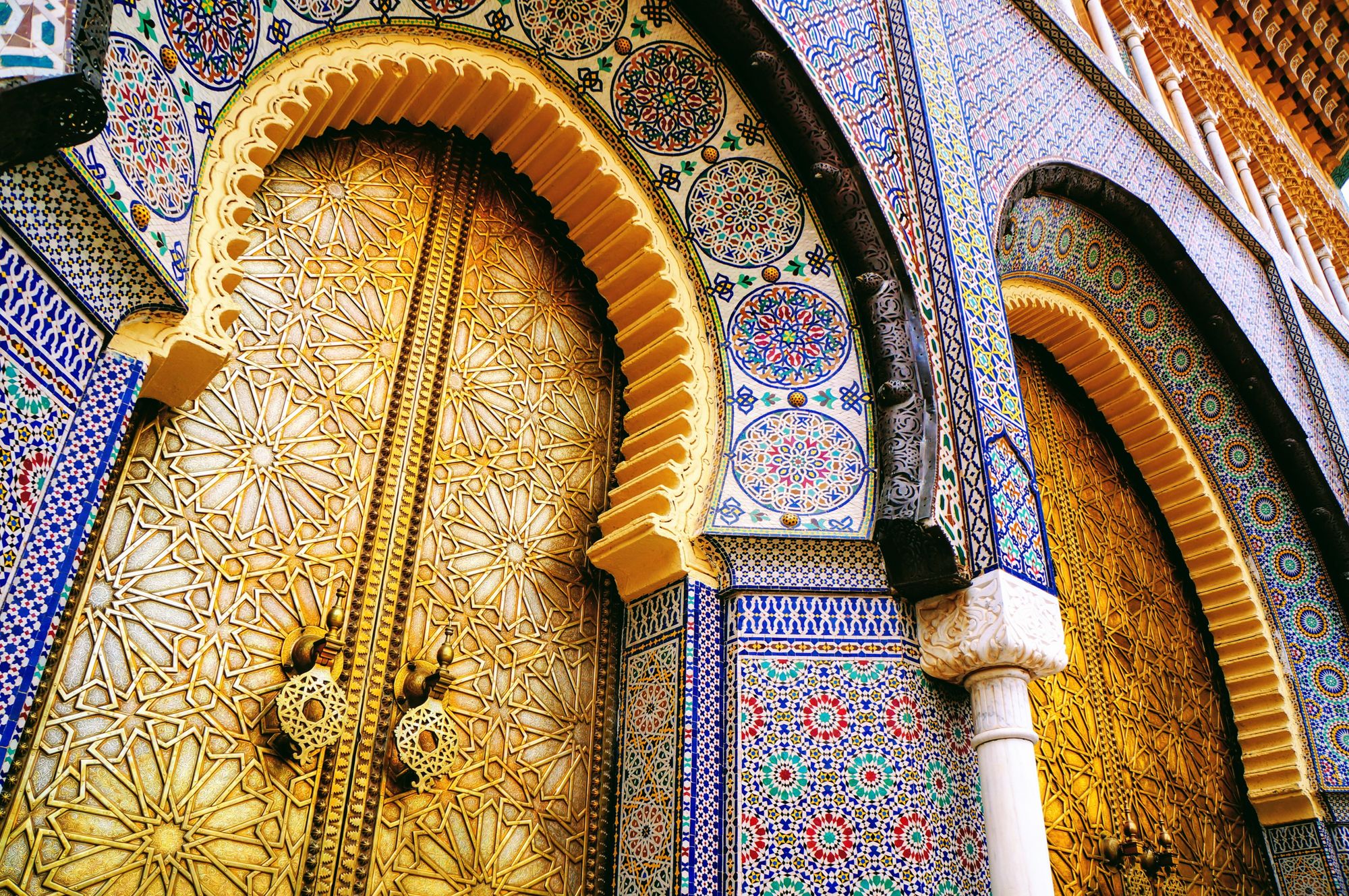
Fez
Fez, the ancient and wise city of Morocco, is located in a valley at the foot of the Atlas Mountains. Vast and sprawling, with its medieval medina and enchanting labyrinth, it was founded by Idris I, a direct descendant of Prophet Muhammad and the first ruler of the Idrisid dynasty. The best views overlooking the glory of Fez are from the Merinid Tombs, located in a dominant position to the north of the city.
Islamic heritage
Start your adventure in Fez at the Bab Bou Jeloud gate, which serves as the entrance to Fes el Bali, the oldest district of Fez and a remnant of the Idrisid dynasty. Visit the Al Quaraouiyine University, considered by UNESCO to be the oldest university in the world still in operation. As is the tradition of the Arab world, the university was also a mosque. It is possible to trace the history of Fez through its character linked to Tunisia and Andalusia. Visit the Andalusian Mosque, located in an area that reflects the relationship of Andalusian immigration to Morocco and the R'cif Mosque, in the heart of the medina, with the city's largest minaret, attracting thousands of worshippers every Friday. During the Almoravid era, Fez began to become a centre of scholarship. When the city was under Marinid control, it shone brightly through its architecture, embellishments and cultural Madrasas or Medersas (Muslim religious education establishments).
The district of Fès el Jadid, the "new Fez", was designed by the Marinids in the 13th century. It is home to the Mellah of Fez, the district in which a notable population of Moroccan Jews lived, as well as the Royal Palace, an official residence of the King of Morocco, which is the heart of this district and the former axis of power of the Marinids. Discover the Vieux Méchouar and the Place des Alaouites near the palace park. You can witness the ornaments on the imposing gates in the Place des Alaouites, named after the contemporary dynasty. A ten minute walk away, you can admire the Dekkakin Gate, a fine example of medieval city walls.
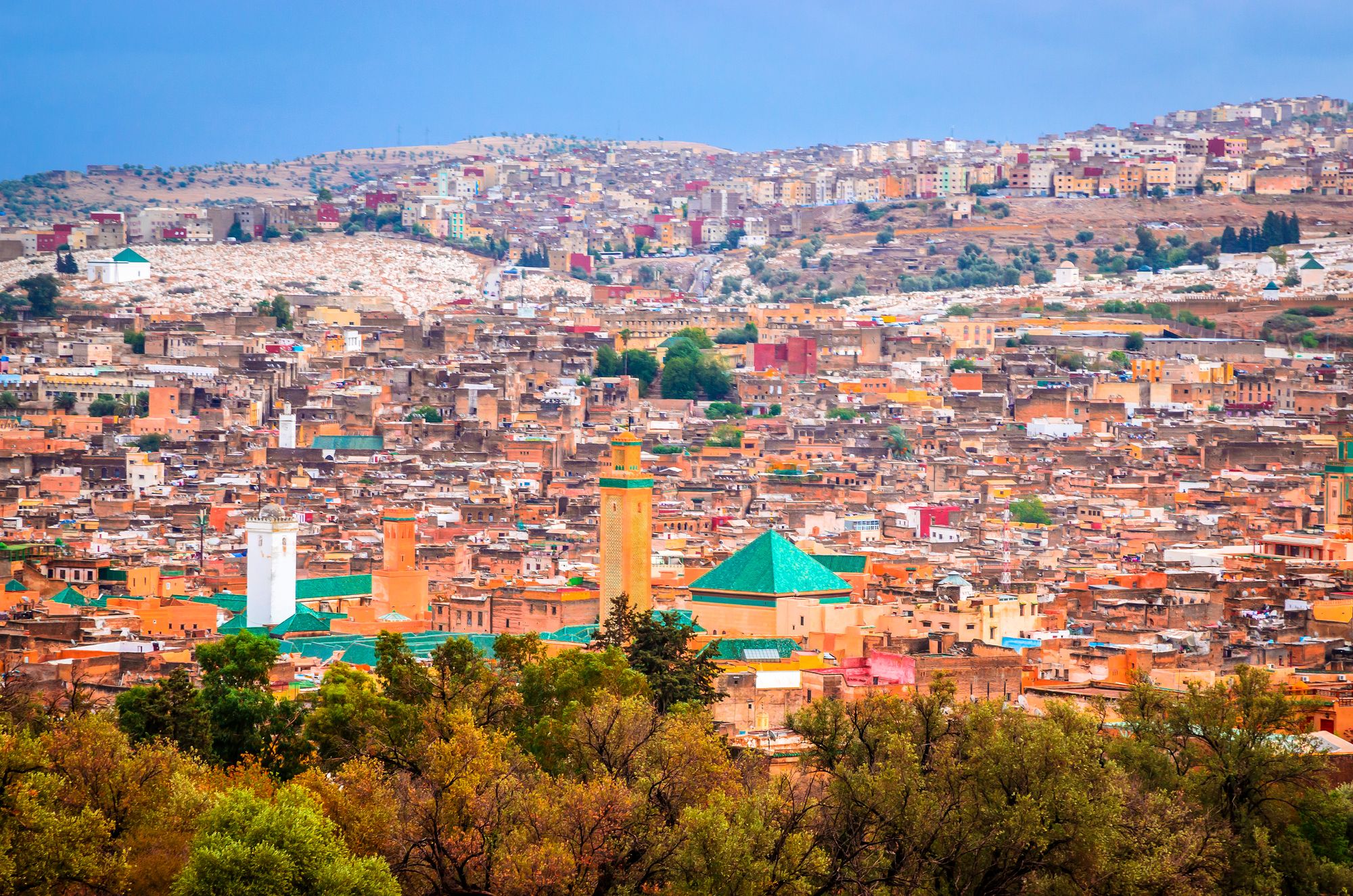
Medersas and culture of Fez
The Medersas emphasise the appreciation and importance of Islamic science education in Fez. It was not only educational institutes that had the patronage and protection of the Marinids Sultans, but also the perfect arena to demonstrate an appreciation of the arts. Visit the Medersa Bou Inania, the most remarkable one, with its delicate details through the Zellige and the modeling of wood, its marbled interior courtyard and its arabesque rooms. The Madrasa el-Attarine and the Madrasa as-Sahrij are also essential to immerse yourself in the beauty of the architecture of Moroccan art.
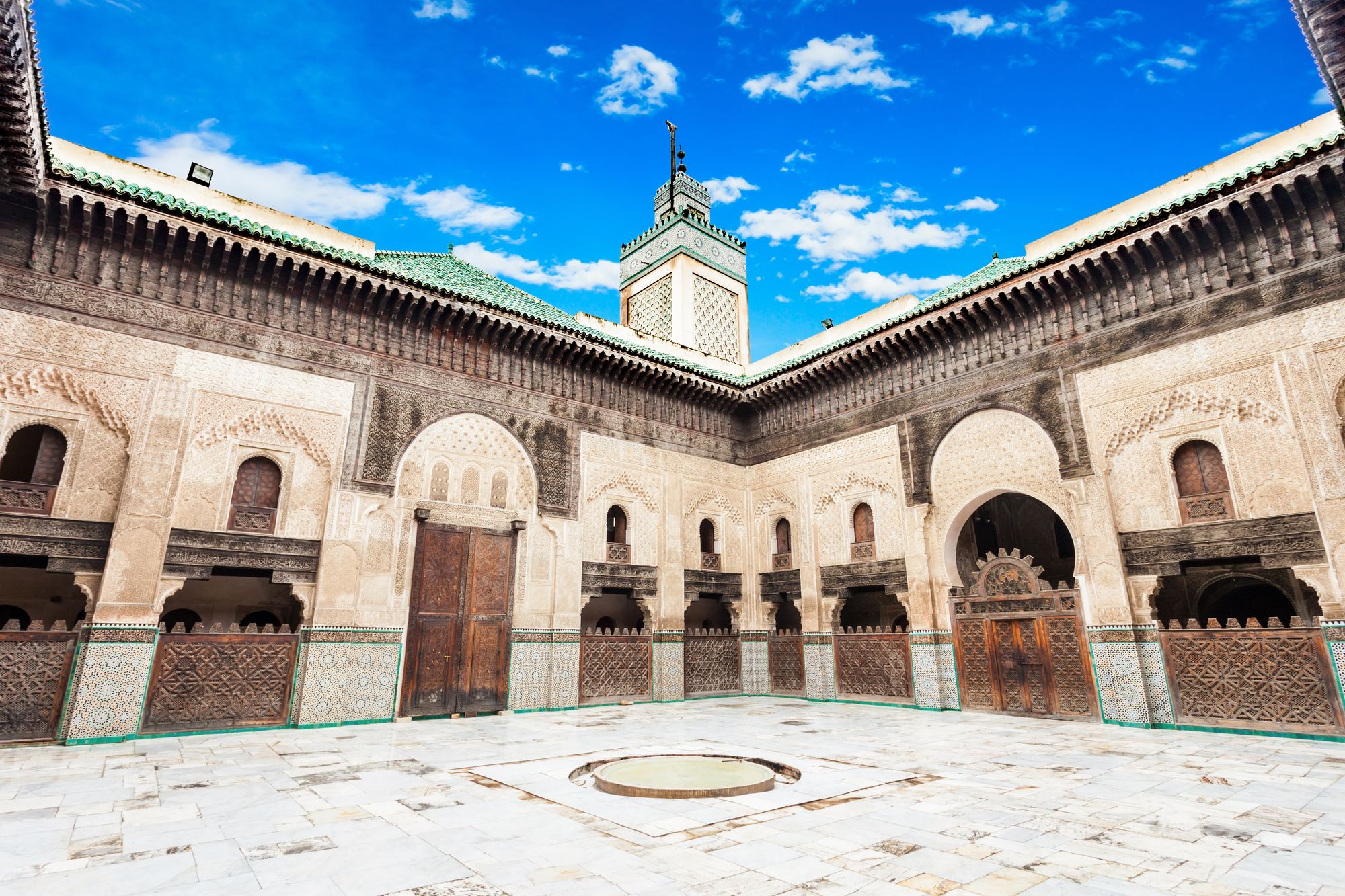
Modern aspect of Fez
After absorbing the history of Fez, visit the New City, designed by the French during the protectorate era more than a century ago, a breath of modernity in your visit. Relax in urban parks, such as Place de Florence within the city or Parc Champ de Course with its tranquil pond. This modern district also offers you countless choices of international restaurants.
Marrakech
Marrakech, located in the extreme Maghreb, is the gateway to the Sahara. The Atlas mountains dominate its horizon. The heart of the city reveals a reputation for luxury and style. The main square, Jemaa el-Fna, is the most popular in Marrakech, with its souk that never sleeps.
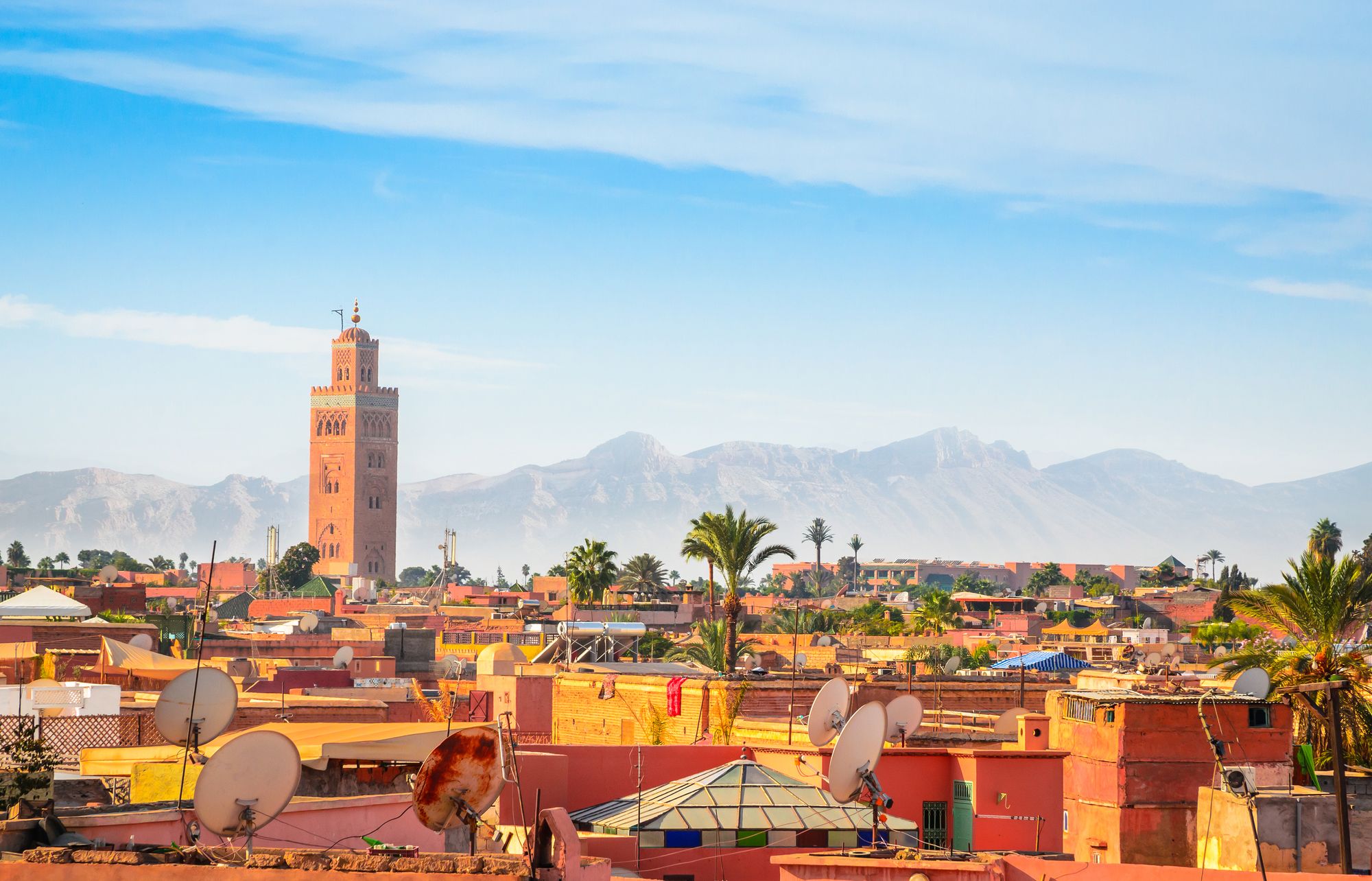
Origins of Marrakech
Marrakech, founded as the capital in 1071 by Emir Abu Bakr ibn Umar of the Almoravid Empire, is rooted in its Amazigh origins. The Walls of Marrakech with their red hue give it the name of “ochre city”. Its sub-Saharan Amazigh identity is revealed through music, craftsmanship and historical names. The Casbah, the historic citadel, lies south of the walls. The Porte Agnaou is decorative with Kufic calligraphy and its presence unchanged. Today, an official residence of the king dominates the area, but the Mansouria Mosque is a fine example of detailed simplicity. Visit the Bahia Palace, of incomparable beauty, with its ornate riads, its glittering marble courtyard, its intimate gardens and the textured and refined muqarnas (archetypal form of Islamic architecture). Don't miss the impressive Koutoubia Mosque, the largest mosque in Marrakech with its 77-metre high minaret. Close to the mosque are the Saadian Tombs, a historic royal necropolis dating from Morocco's Golden Age with exterior gardens and architecturally breathtaking rooms.
Gardens of Marrakech
The city cherishes several gardens of unique character including the Menara Gardens, an iconic place in Marrakech with its water reserve, its Alaouite pavilion and its fruit and olive groves. The Majorelle Garden offers lush greenery and houses the Berber Museum and the Yves Saint-Laurent Museum.
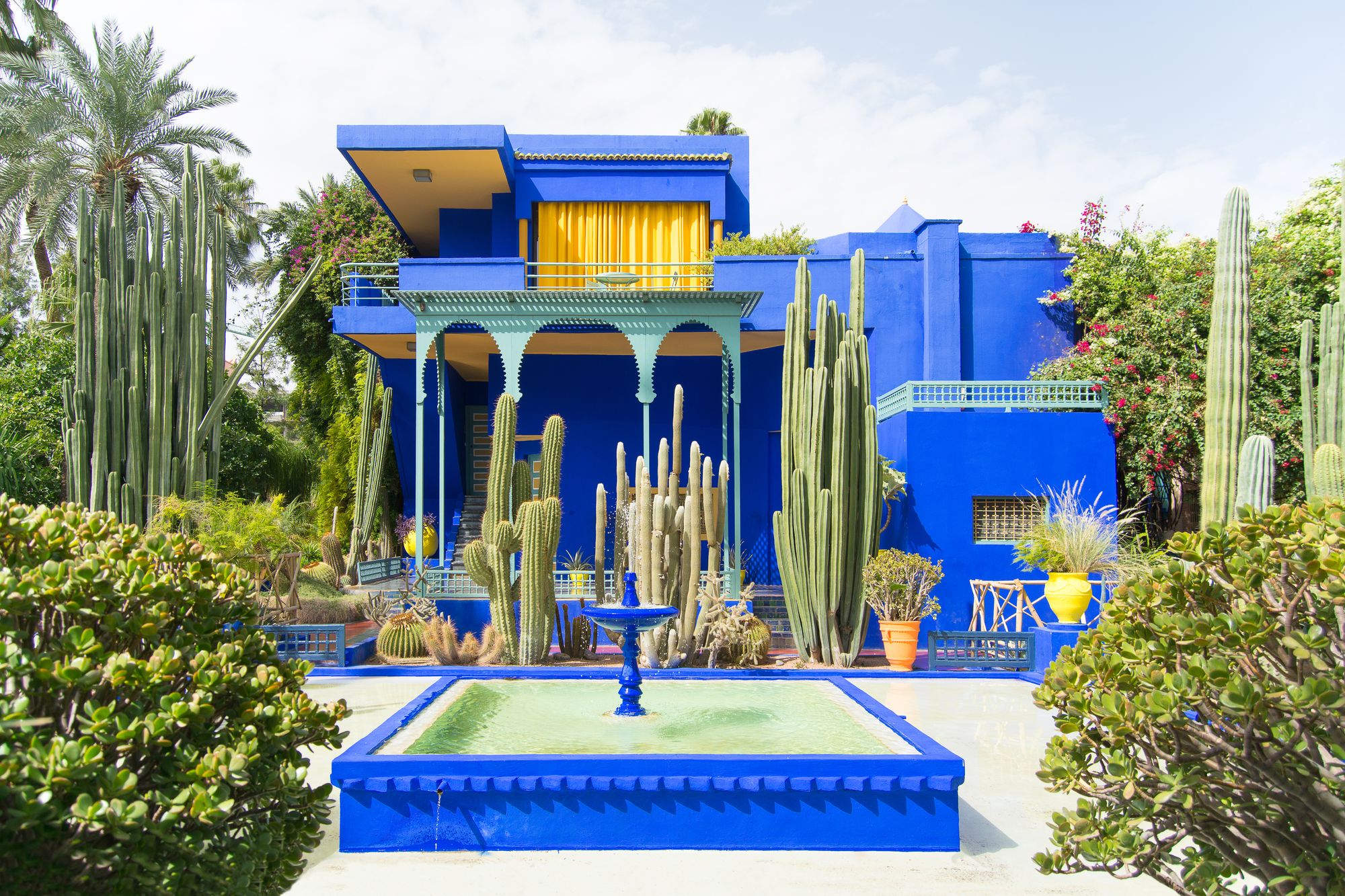
Modern aspect of Marrakech
The Guéliz Quarter, just outside the Medina, although born under French imperialism, is now the trendy and modern district of Marrakech. Visit the Musée des Confluences to understand the exchanges between East and West and discover its exhibitions housed in this ancient palace. Travel through space and time to the history of Morocco's last century through the exhibitions in the Maison de la Photographie.
Meknes
Meknes, a UNESCO World Heritage Site, is a bewitching city that offers its visitors a romantic and enchanting charm. The hilltop city is nicknamed the “Versailles of Morocco” with the Zellige of the Bab Al-Mansour and its oriental beauty.
Roman history of Meknes
Located about thirty kilometres north of Meknes, the Ruins of Volubilis bear witness to the Roman past of the Middle Atlas region with the remains of temples, the triumphal arch and the basilica which are remarkably well preserved. The site, which is a UNESCO World Heritage Site, also offers panoramic views of the Middle Atlas Mountains.
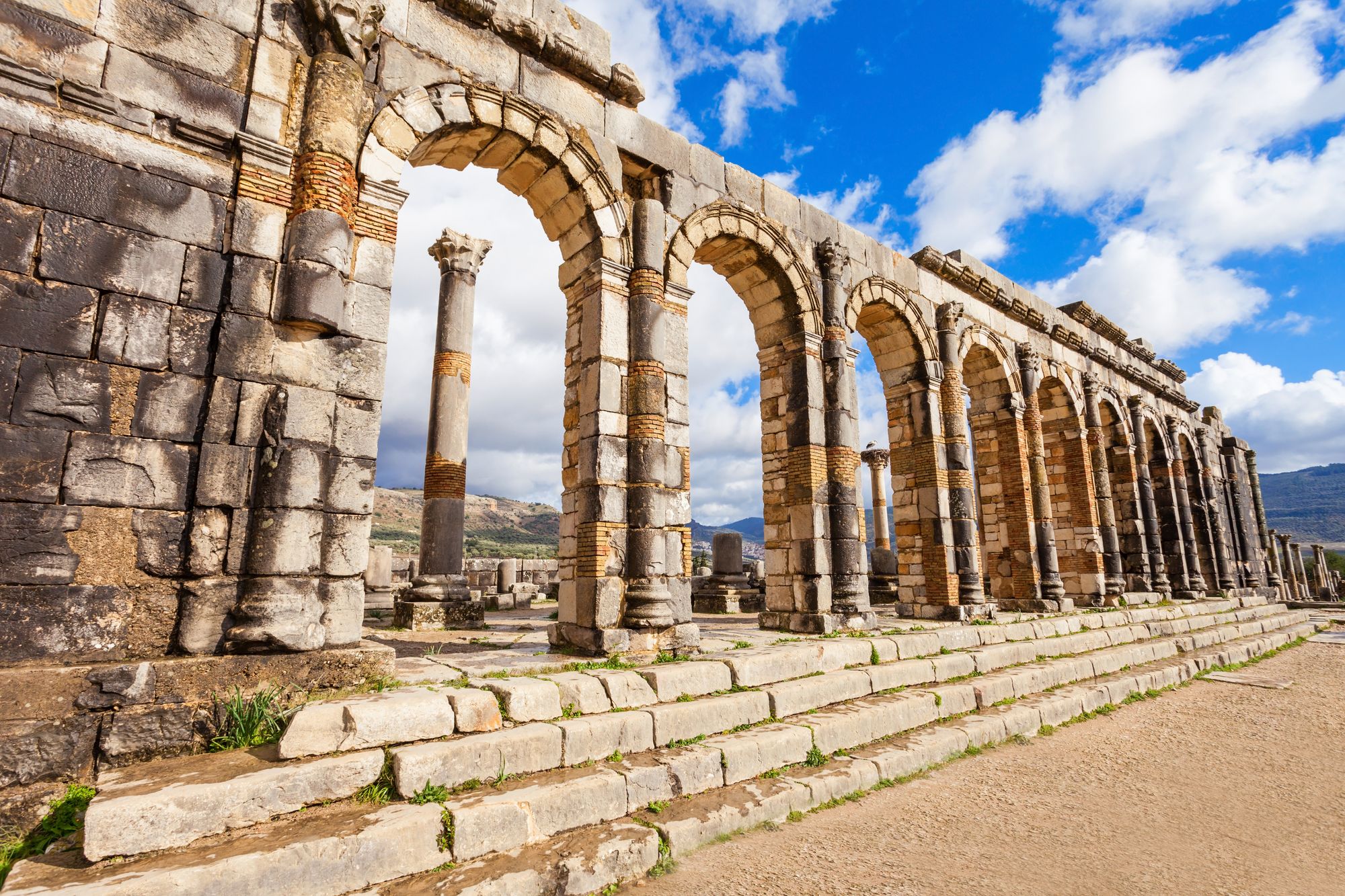
Legacy of the Meknes dynasties
The Mausoleum of Moulay Ismail is a must-see that consists of several rooms supported by marbled columns in the Moroccan-Andalusian style in honour of the Alaouite dynasty. It is a place of pilgrimage and a historic testimony to Sultan Ismail, who defended Morocco against invaders from Europe. Place Hedim is the quieter version of Jemaa el Fna in Marrakech. It is surrounded by several historic buildings such as the Kara Prison and the Madrasa Bou Inania, which shares the same name with a school in Fez, due to their affiliations with the patron and Marinid leader, Abou Inan Faris. The emerald minaret of the Great Mosque of Meknes can be seen from the roof of the Madrasa and it dates from the 18th century. The 3,500 square metre mosque is open to prayer and every corner is a North African technological surprise. Nearby is the Dar Jamaï Museum, a 19th century palace that preserves artefacts of jewellery, ceramics, and woodwork and features aspects of Moroccan architecture from riads, hammams and more.
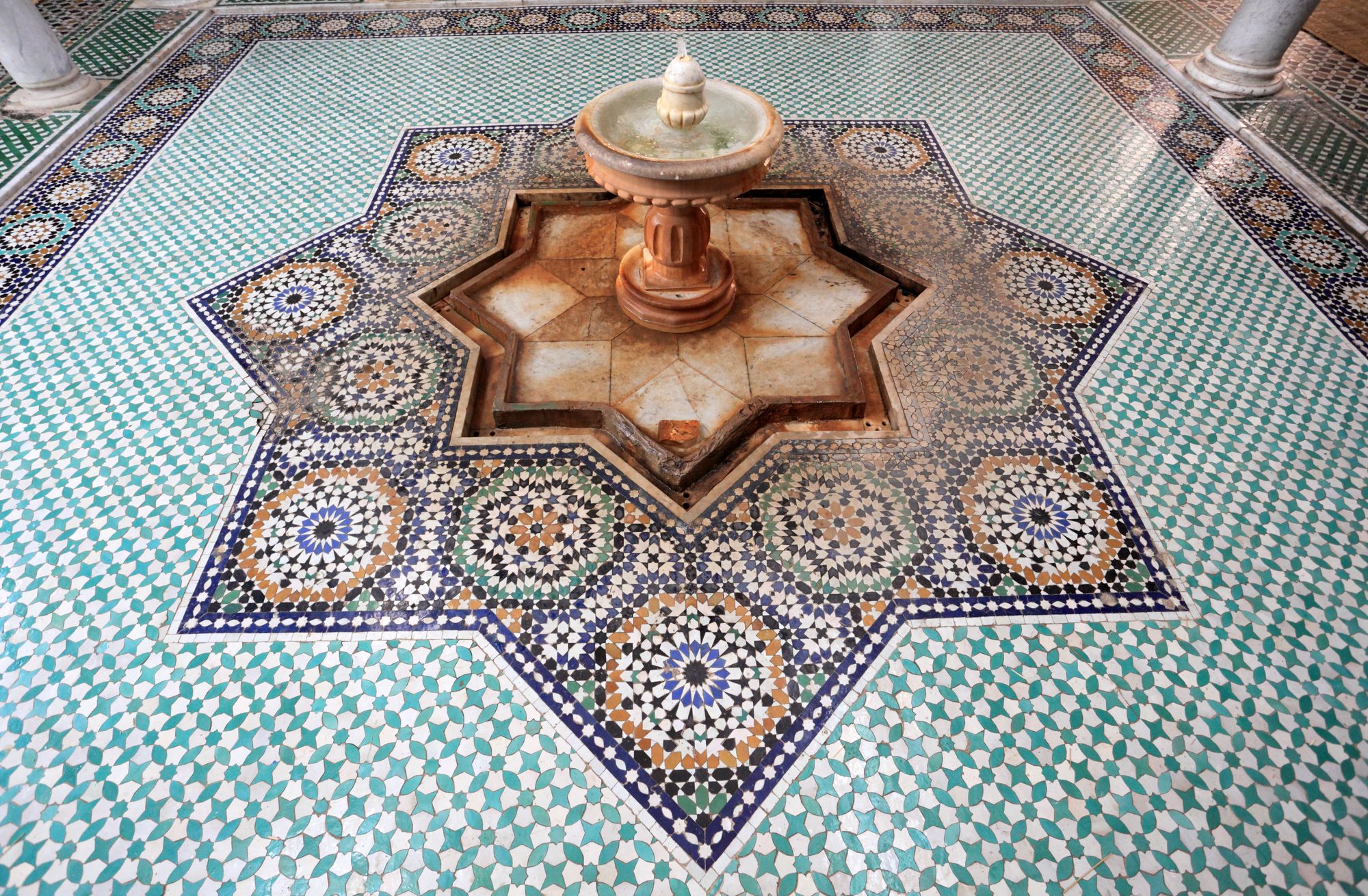
The sacred village of Moulay Idriss Zerhoun is perched on the Zerhoun Mountain and overlooks the ruins of Volubilis. This pilgrimage site is dedicated to Moulay Idriss al Akhbar, a descendant of the prophet Muhammad and the founder of the first Moroccan state. In August, the holy city overflows with religious festivities. Formerly forbidden to non-Muslims, the village now invites everyone to stroll in the ascending streets.
Rabat
Rabat, the contemporary capital of Morocco, exudes an enchanting charm with its Kasbah, a former fortified military camp located in Rabat and built in the 12th century, set on a hill in front of the sea. Rabat is a less touristy destination and offers an atmospheric charm.
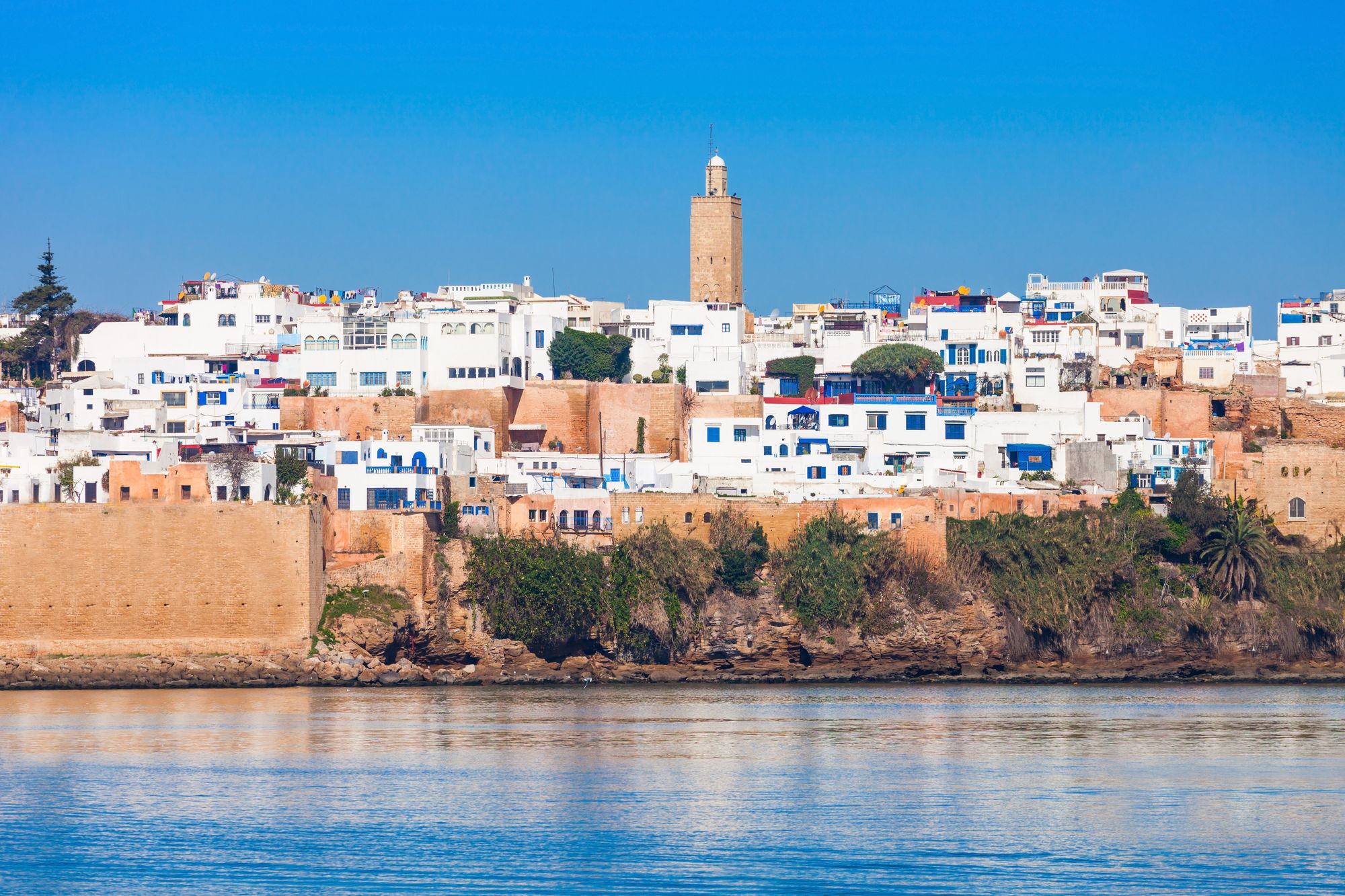
Time travel in the Kasbah
Start your Rabat tour at the Kasbah des Oudayas, in front of the Bab Oudaya, where verses from the Quran can be seen on its facade in Kufic calligraphy, the style popular during the Almohad dynasty. Discover the Kasbah Mosque, built in 1150 and restored to its splendour in the 18th century by Ahmed el-Inglizi, (an English architect who converted to Islam). The Oudayas Museum not only displays a collection of works encapsulating the social history of Rabat, but it is also a former palace of Moulay Ismaïl, which explains the beauty of the classical pavilion and the craftsmanship that adorns walls and ceilings. Visit the Gardens of Andalusia, a colonial rendition inspired by the gardens of Arab Spain.
The importance of the dynasties in Rabat
The Tower of Hassan is a detailed and symmetrical wonder built in the 12th century intended to be the minaret of an unfinished mosque. The lasting legacy of the Tower of Hassan, the Giralda in Seville and the minaret of the Koutoubia Mosque demonstrates the prowess of the Almohad dynasty. On the other side of the tower is the Mausoleum of Muhammed V, built in the 20th century with the intention of reflecting the diversity of Moroccan craftsmanship and the importance of the current dynasty: from the rise of the Alaouites in 1631 until today.
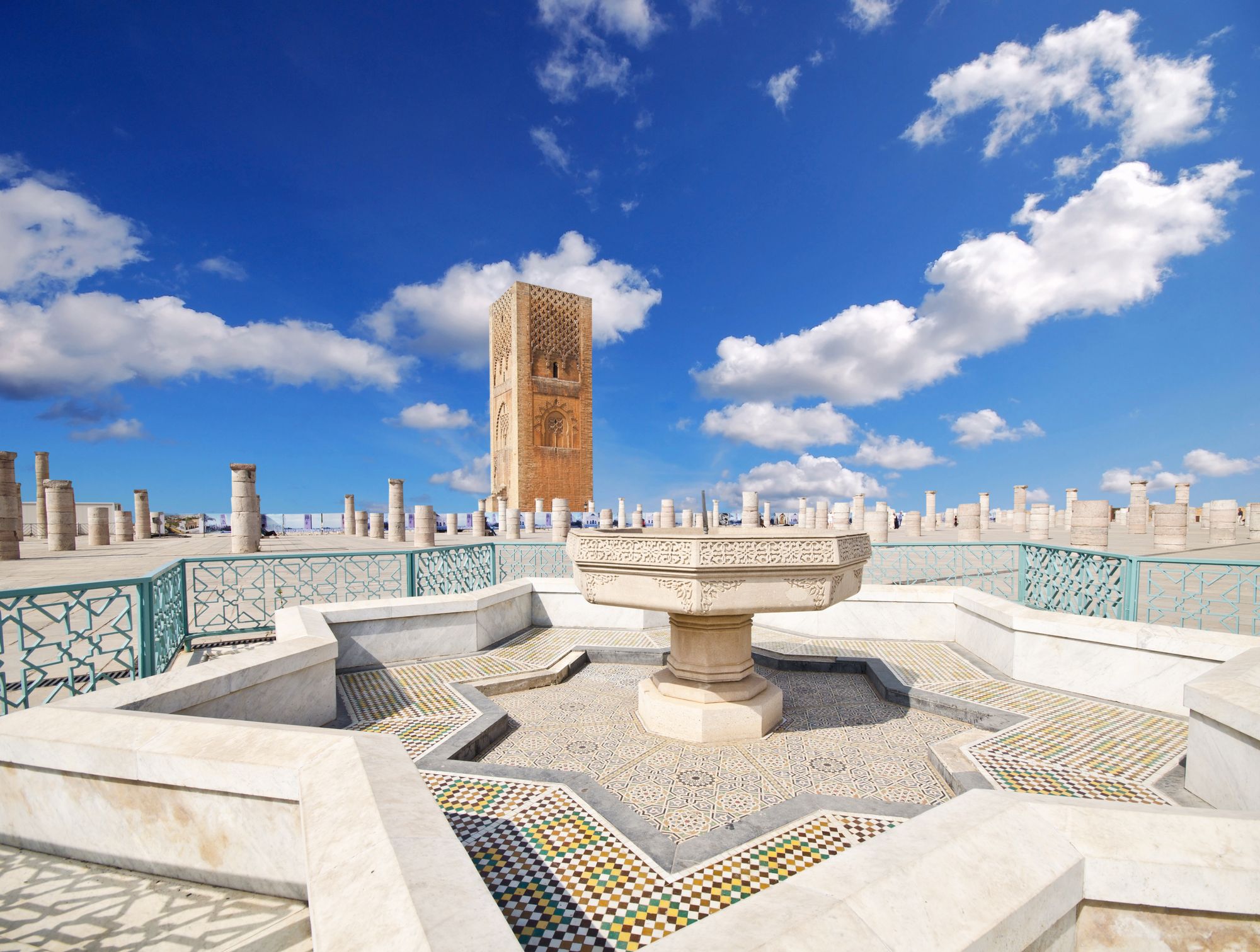
The river Bouregreg in Rabat
The Marina Bouregreg is located at the mouth of the Bouregreg river in Salé, and is one of the most emblematic places in the capital. Book a boat cruise, have lunch, or just admire the contrast of the old with the modern. Follow the Bouregreg to reach Chella, a fortified medieval city, relatively neglected, which shows an infusion of Phoenician, Roman and Muslim remains. Visit the Necropolis of Chella, built by the Marinids, which commemorates the Amazighs and their Black Sultan, Abu Al-Hasan 'Ali ibn' Othman.
